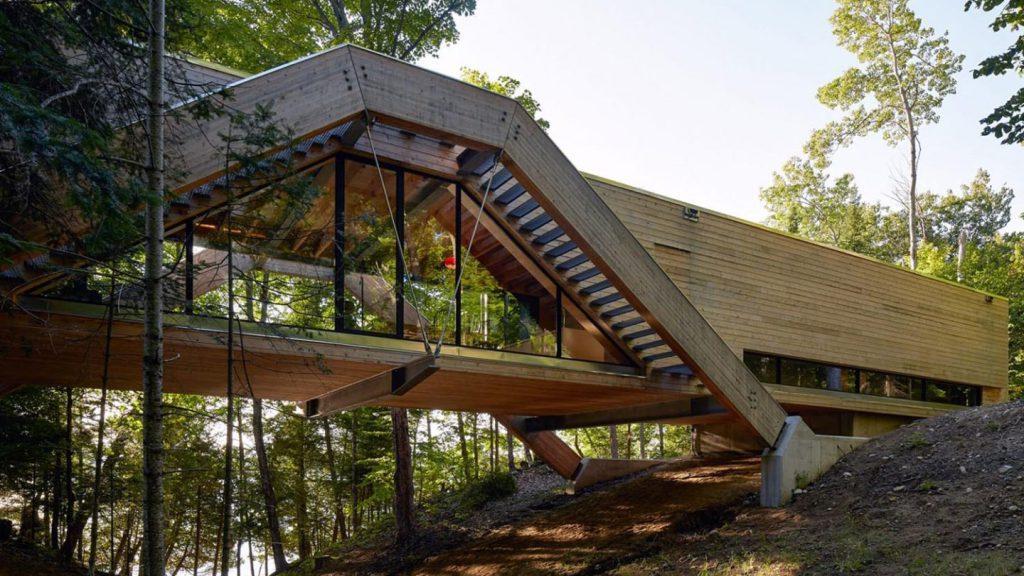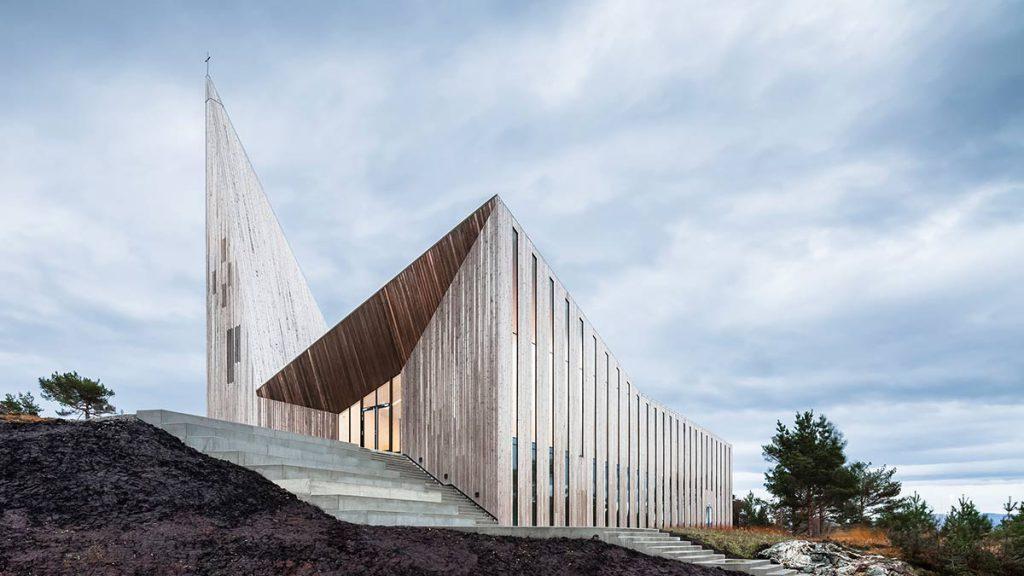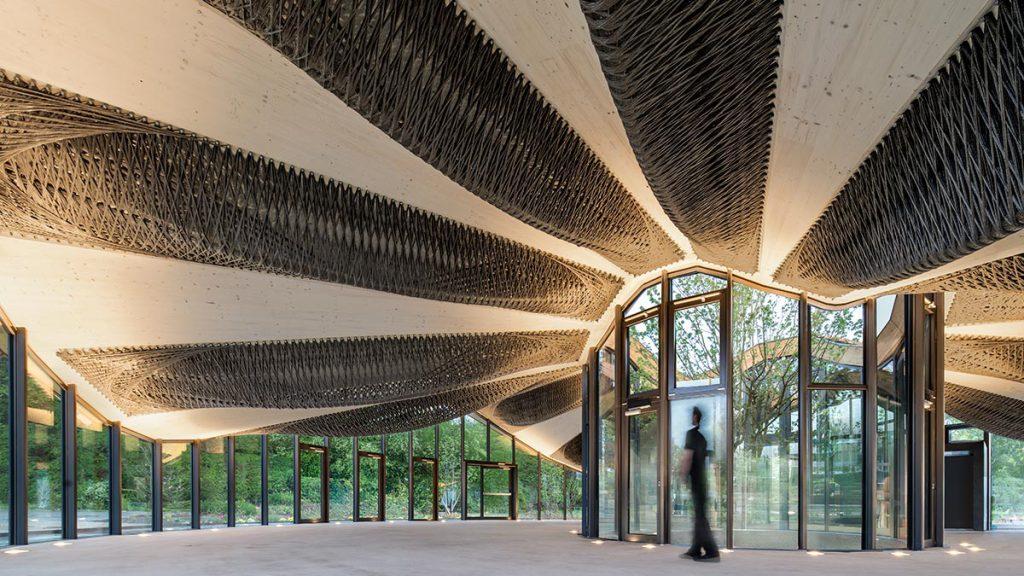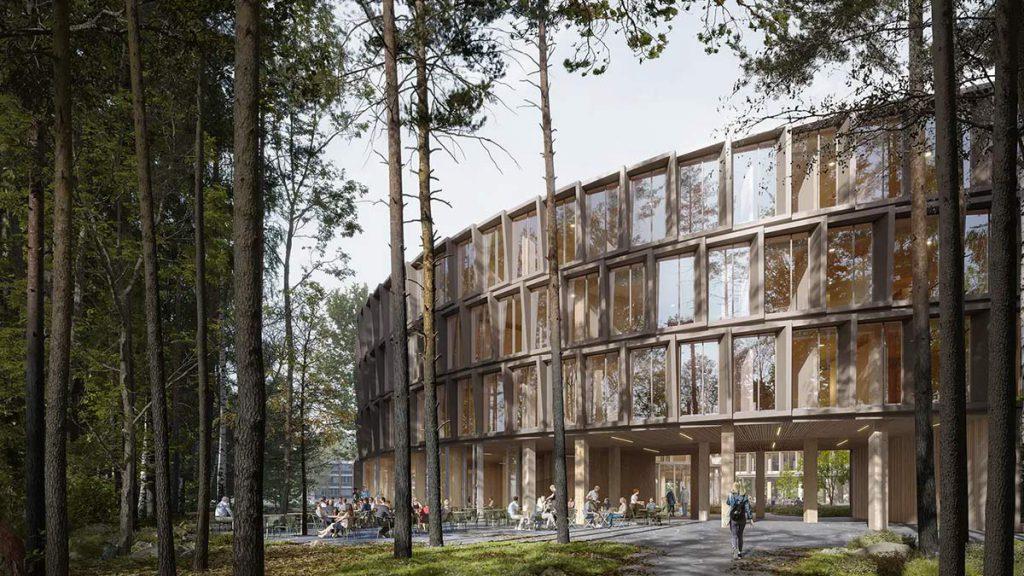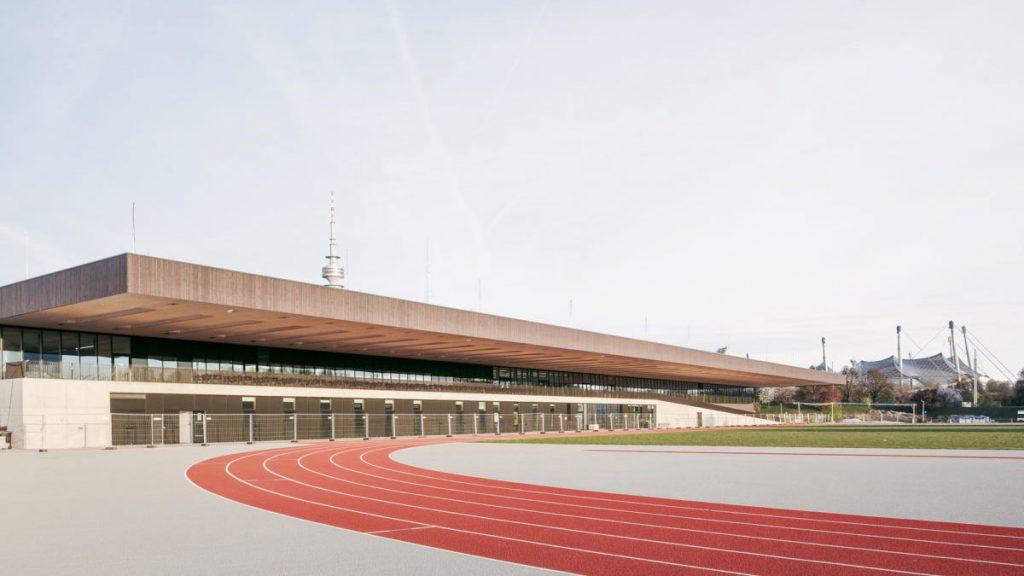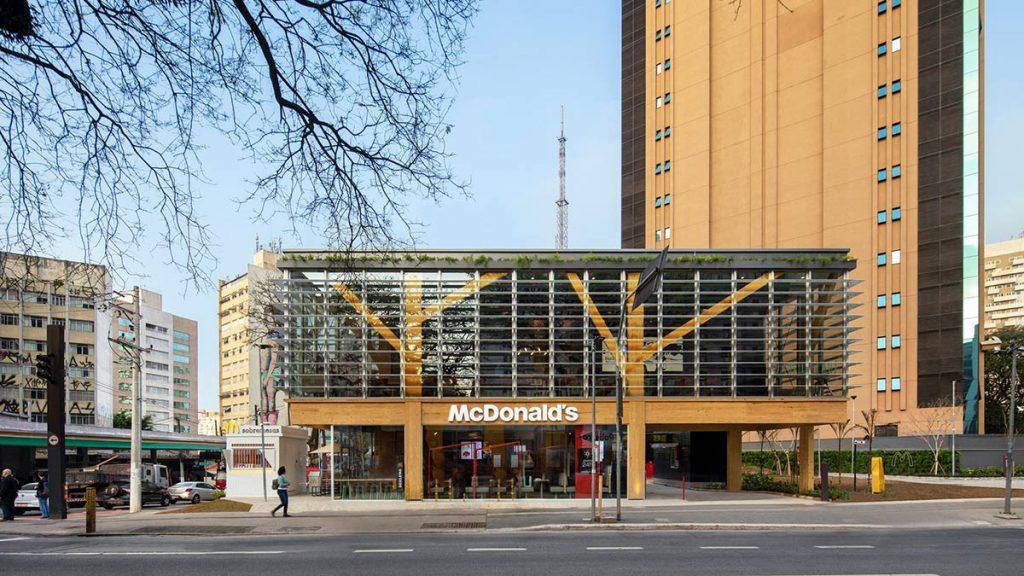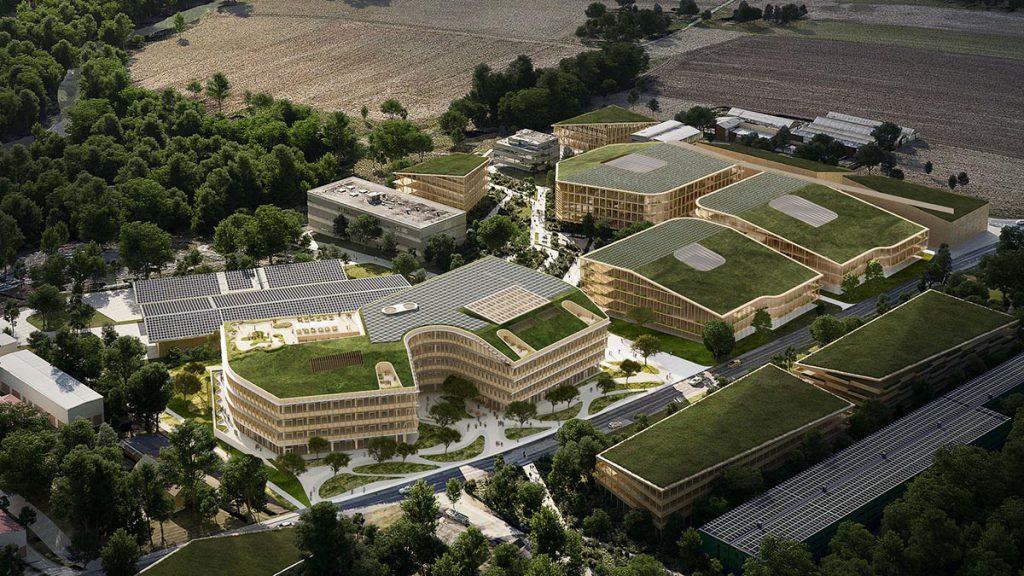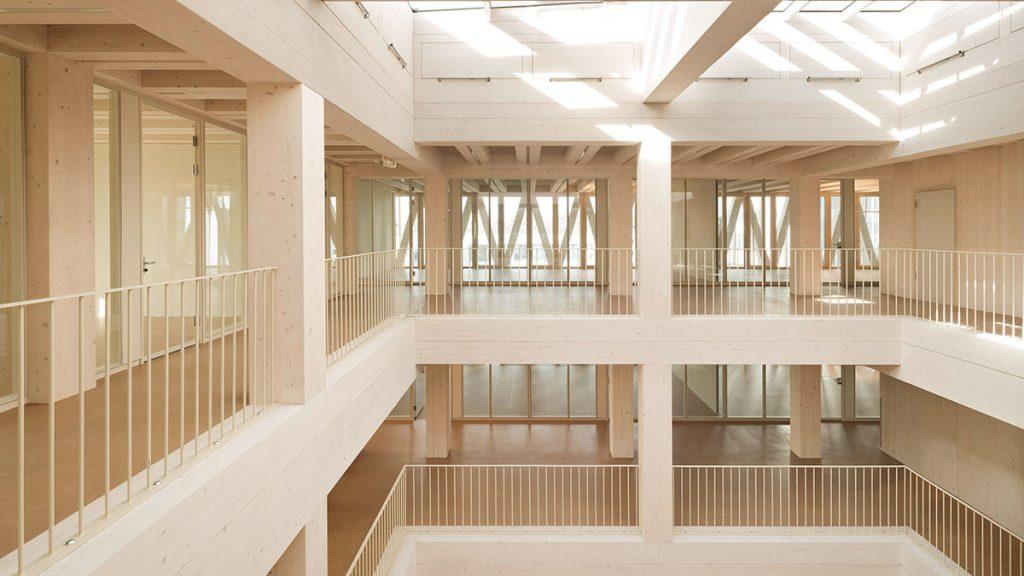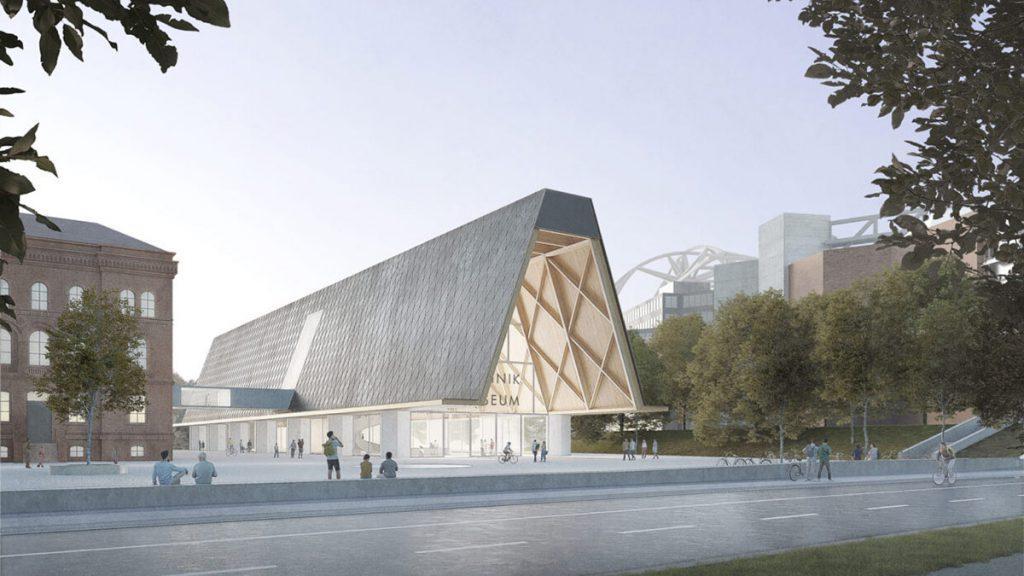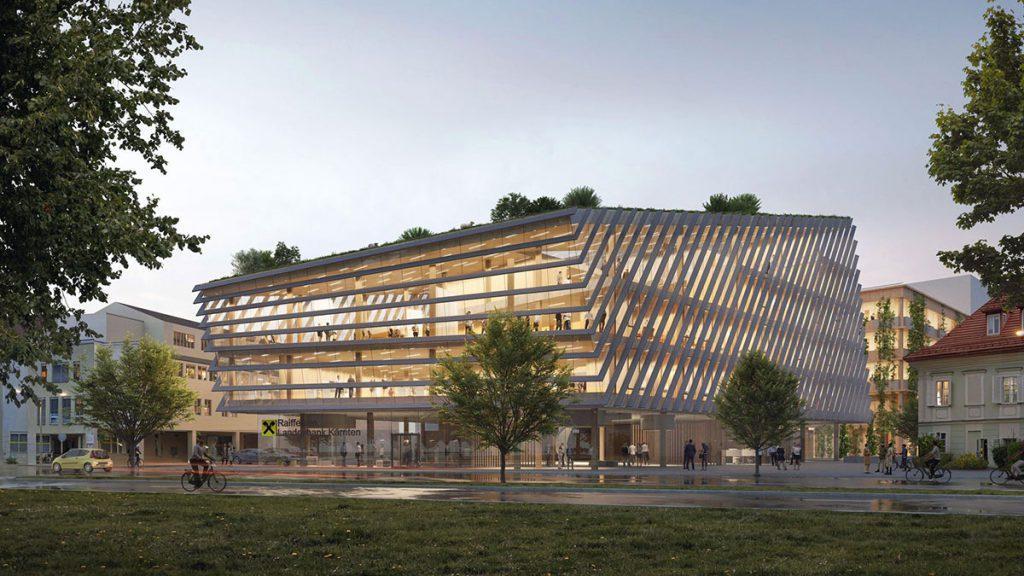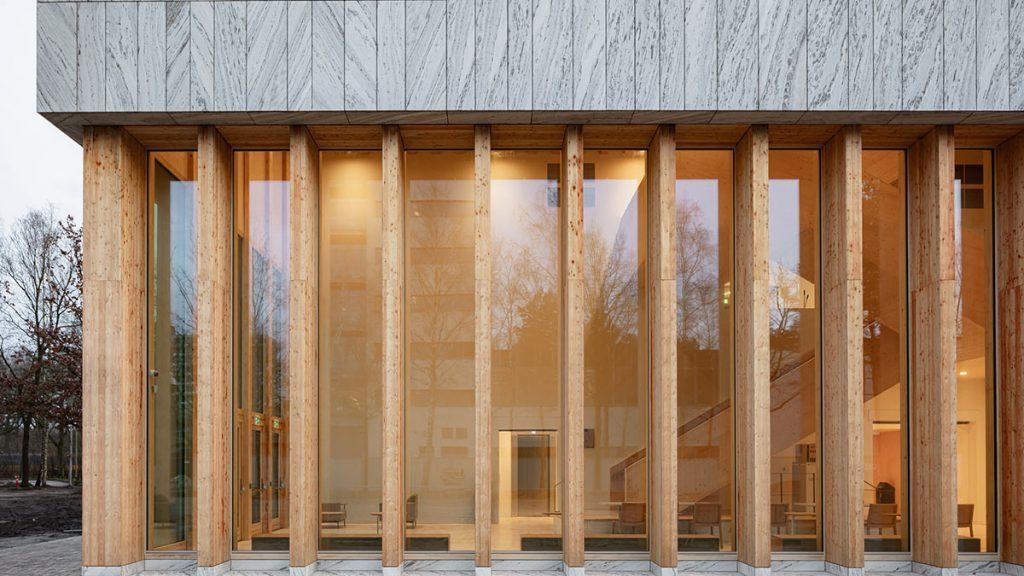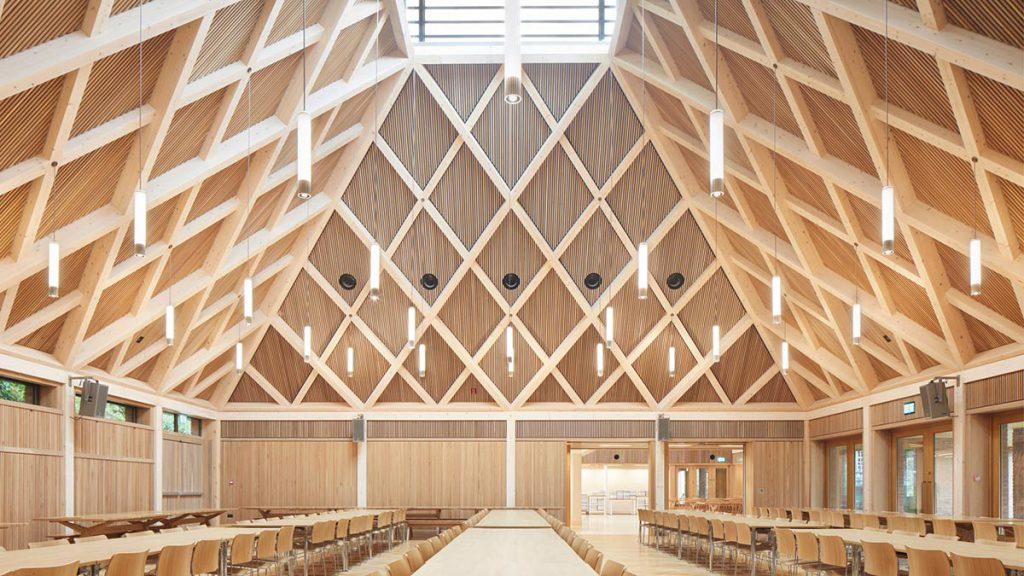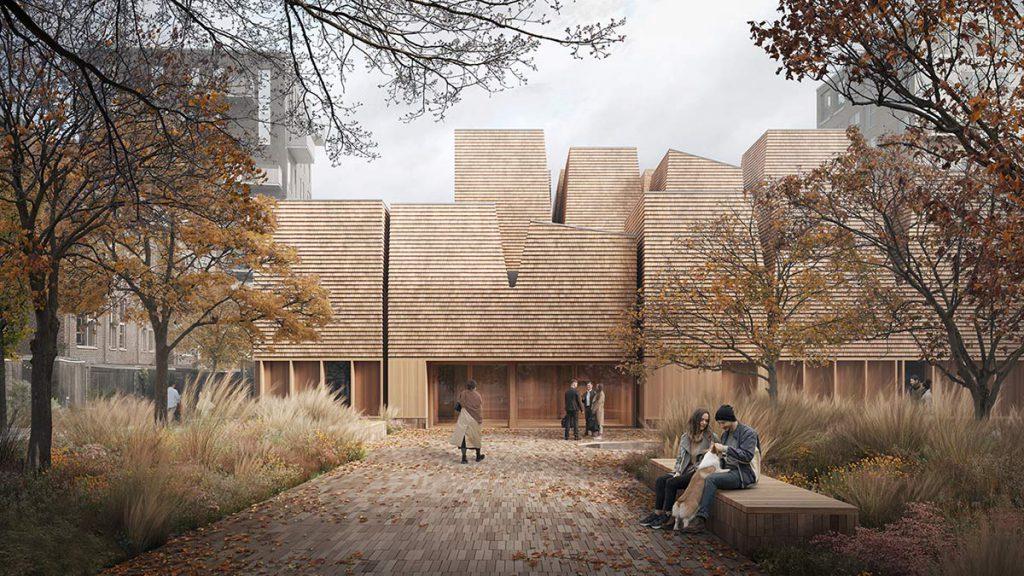

A sector on the upswing
It is no secret that the construction sector is one of the largest emitters of greenhouse gases. With carbon pricing still in its infancy, entrepreneurs in the industry are actively pursuing how to achieve decarbonization.
Normally, bricks are fired in tunnel kilns that are operated with oil or gas. In the tranquil Upper Austrian district of Uttendorf, the world’s first high-temperature furnace using power from renewable energy sources is now up and running. “The new electric furnace will lead to a reduction in CO₂ emissions for brick production of up to 90 percent,” says Johann Marcher, Managing Director of Wienerberger Austria. As the world’s largest brick manufacturer, Wienerberger are aiming to make this traditional building material fit for the future, replacing fossil fuels with renewable energy.
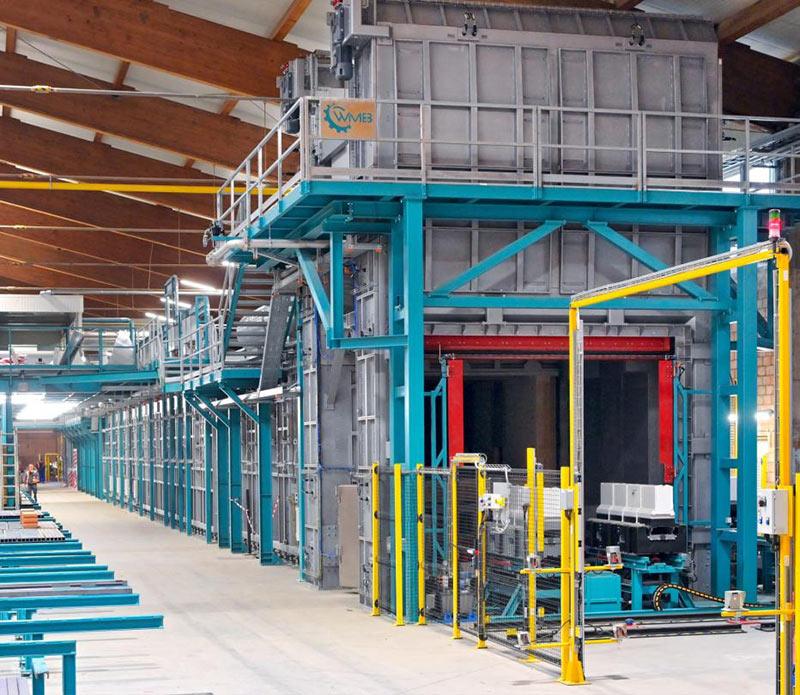
The (nearly) carbon-neutral brick
Working together with the Austrian Institute of Technology (AIT), it was also possible to fine-tune the energy efficiency of the kiln, dryer and heat pump. This enabled roughly a 30 percent reduction in energy requirements for the company’s new GreenBricks. Besides being good for the environment, this also increases the cost efficiency of the site. “This will allow us to keep production costs under control,” continues Marcher.
The new electric furnace will lead to a reduction in CO₂ emissions for brick production of up to 90 percent.
Johann Marcher, Managing Director of Wienerberger Austria
The first “nearly carbon-neutral brick” rolled off the conveyor belt in the summer of 2024, and since early 2025 the plant has returned to full capacity following the installation phase. Most of the required investment came from Wienerberger. “The project enables us to make our own contribution towards decarbonization in the industry,” the Managing Director explains.
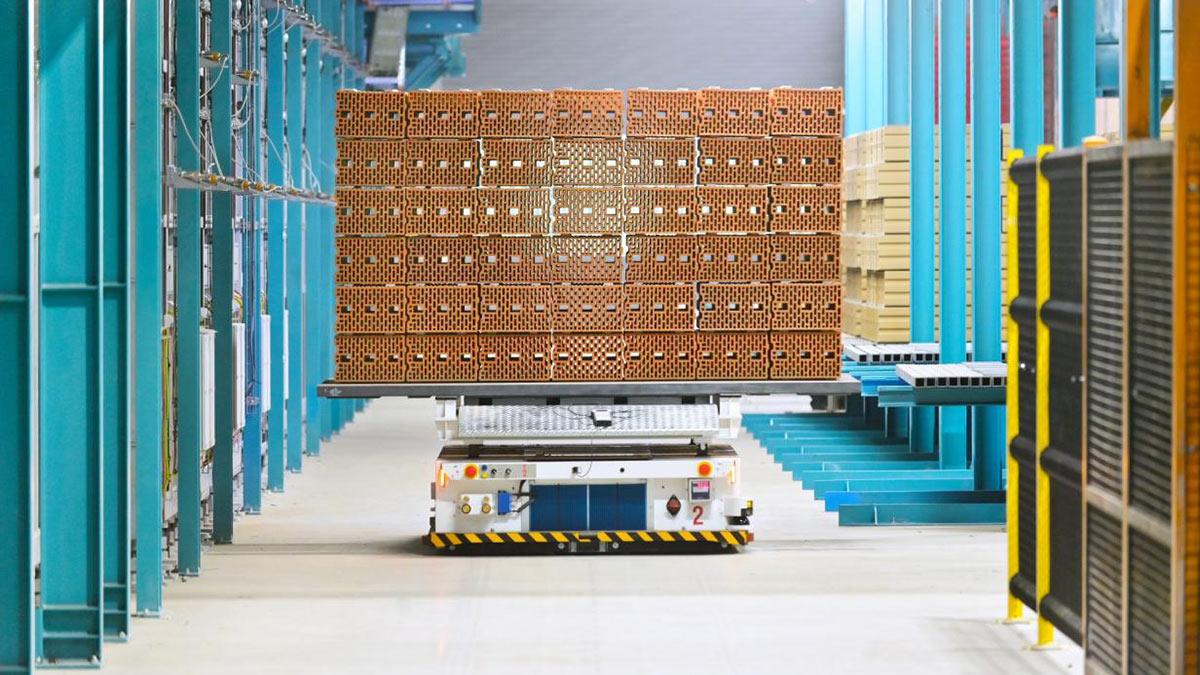
Major leverage for carbon reduction
It is common knowledge that the EU Green Deal intends to make Europe the first climate-neutral continent by 2050. A look at the following figures shows the dimensions involved here: every year, the construction industry produces around four billion tonnes of cement. And each tonne of cement produces over half a tonne of harmful carbon dioxide.
ETH Zurich has calculated that about 600 billion tonnes of this material have been used in construction worldwide, mainly over the past hundred years. And so it is hardly surprising that a study by the UN Environment Programme in 2020 came to the conclusion that 38 percent of global carbon emissions are caused by the construction and building sector.
“By now, everyone will have heard the shot being fired. We’re in a hurry, and in the construction sector we have a huge influence on what happens to the climate as a whole,” Stefan Winter recently warned in an interview with ubm magazine.
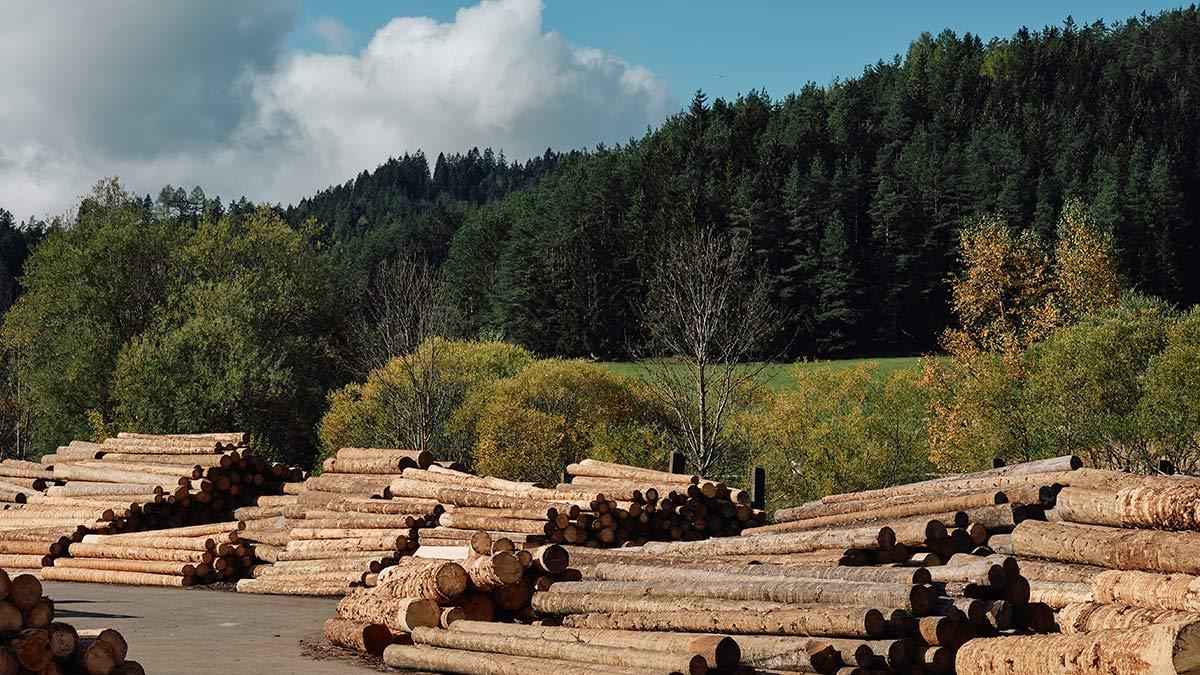
Winter is a professor at the Technical University of Munich and one of the most renowned experts in modern timber construction. With his company bauart, he is an advisor and structural engineer for multi-storey timber construction projects. These include the high-rise Timber Peak, which is a current project by UBM Development at Mainz Zollhafen.
Hotel developer turns timber construction pioneer
Headquartered in Vienna, UBM is one of only a few market players who have successfully negotiated the crisis-stricken economic situation in the construction industry of recent years. Triggered by the disruption created by the pandemic, the company management decided to pursue a different path, moving away from the focus on hotel development. Instead, the company is taking a pioneering approach to apartments and offices, with a climate-friendly timber hybrid design.
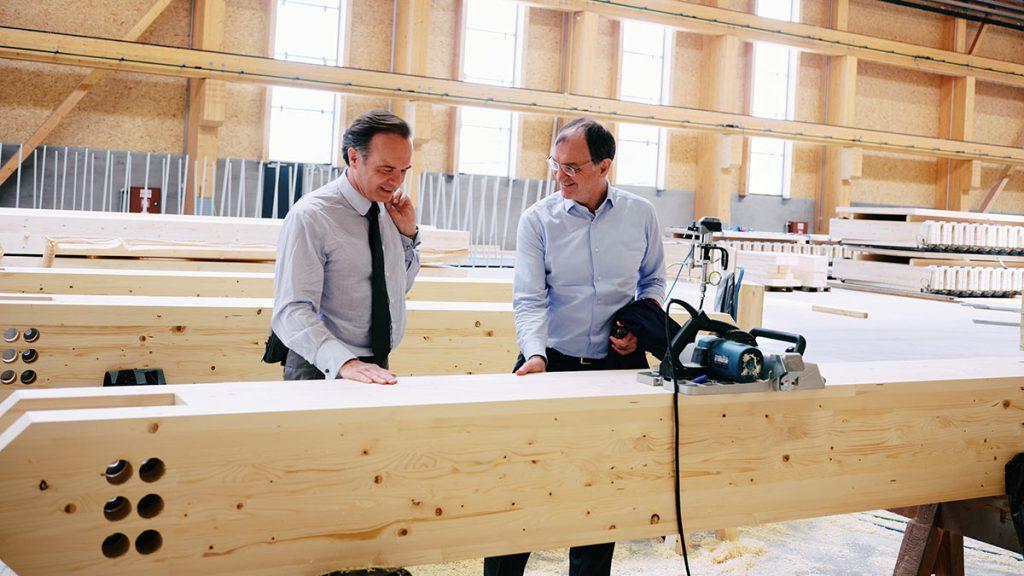
We cannot afford the consequences of unbridled climate change, particularly from a financial perspective.
Thomas G. Winkler, CEO of UBM Development
“Carbon emissions caused by humans have been proven to accelerate global warming and therefore climate change. However, we cannot afford the consequences of unbridled climate change, particularly from a financial perspective. And so it is literally our obligation to use the greatest leverage for reducing carbon emitted during the construction of buildings – with timber construction,” explains Thomas G. Winkler, CEO of UBM Development, outlining his mission. He continues: “Consequent carbon pricing would greatly accelerate this understanding.”
The total volume of construction projects planned and implemented with a timber hybrid design has been specified by UBM at 300,000 square metres. For each of these projects, the amount of CO2 locked up in the wood used for construction is calculated for the public to see. There is good reason for this: wood is not just a renewable construction material, it also acts as a carbon sink. Carbon is stored in the buildings for many decades, while new trees regrow and therefore filter the harmful carbon dioxide out of the atmosphere.
Reforest the planet, retimber the city
This approach to using timber construction strategically as a cleansing mechanism for the climate is also advocated by Hans Joachim Schellnhuber, one of the most renowned climate researchers and the visionary behind the initiative New European Bauhaus.
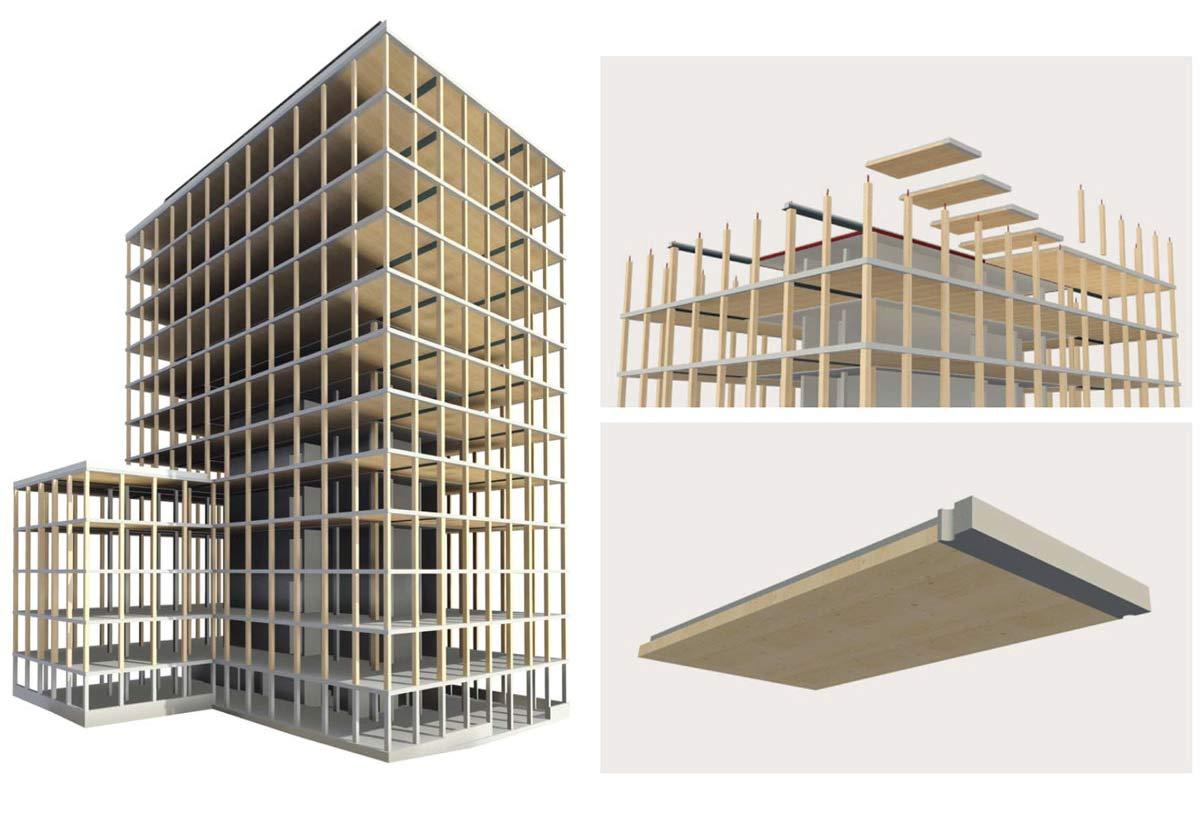
At the wood4bauhaus conference, he presented his strategy “Reforest the planet, retimber the city.”
Schellnhuber and other climate experts are in agreement that we will exceed the two-degree threshold specified in the Paris Climate Agreement. In order to halt the tipping processes in time, the emissions curve must bend downwards again as soon as possible.
If we want to actively remove carbon from the atmosphere, there is a wonderful, natural solution: photosynthesis.
Hans Joachim Schellnhuber, climate scientist
“But we can only manage this,” says Schellnhuber, “if we actively remove carbon from the atmosphere. There is a wonderful, natural solution here: photosynthesis. If we use this, and construct buildings and infrastructure using the resultant organic raw materials such as timber, then there is a great effect.”
In the meantime, concrete producers are also adopting new mixtures and a proportion of recycled aggregates to reduce carbon dioxide emissions. Pitting “good” against “bad” construction materials, as is frequently propagated, is rejected by the timber construction developer UBM. “The question is rather how we can best manage to produce and implement the most appropriate materials with as little carbon as possible, depending on the individual construction project,” says Winkler. “We can only reach our goal if we all pull together in the same direction.”
Text: Gertraud Gerst
Translation: Rosemary Bridger-Lippe
Photos: Manfred Fresl / Wienerberger, Philipp Horak / UBM Development

